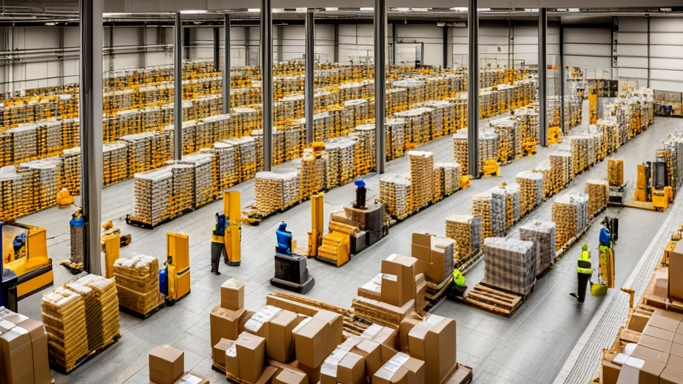Fulfillment By Merchant

Amazon Fulfillment By Merchant or FBM is a method in which Amazon sellers ship their products directly to customers from their own warehouses, instead of using Amazon’s storage and shipping facilities. In simple terms, FBM is a way for businesses to fulfill their own orders on Amazon’s marketplace. In this article, we’ll detail what FBM is and the advantages and disadvantages of using it as a selling method. We’ll also examine FBA (Fulfillment By Amazon) and compare both options to determine which is the better choice for Amazon sellers.
What is FBM?
FBM is a method that allows Amazon sellers to handle their own order fulfillment, including shipping and customer service. This means that the seller stores their products in their own warehouse or storage facility and handles the packing, shipping, and delivery process. Whenever an order comes in, the seller packs and ships the product to the customer, usually within 24 hours.
Advantages of FBM
1. Lower costs: One of the primary advantages of FBM is that it’s usually cheaper than FBA because you don’t have to pay storage and handling fees. This helps you keep your costs down and maximize your profits.
2. More control: With FBM, you have complete control over the entire order fulfillment process, from storage to shipping and customer service. This means that you can manage the process to your preferences, which is especially important if you have specialized products or unique shipping needs.
3. Built-in branding: Because you’re shipping products from your own warehouse, you can include branding materials like flyers, thank-you notes, or samples with each order. This helps you build brand loyalty with your customers and increase your visibility.
Disadvantages of FBM
1. No Prime benefits: The primary disadvantage of FBM is that products fulfilled this way are not eligible for Amazon Prime. This means that customers won’t get free two-day shipping, which can make your products less attractive.
2. Time-consuming: FBM can be time-consuming, especially if you have multiple orders and have to pack and ship each one individually. This can be manageable if you have a smaller number of products, but it can quickly become overwhelming if you’re dealing with a larger volume of orders.
3. Customer service headaches: Because you’re handling customer service yourself, you have to deal with any issues that arise directly. This can add an extra layer of complexity to the selling process, especially if you’re not used to managing customer service.
Which is Better: FBA or FBM?
Choosing between FBA and FBM depends on your business goals, budget, and selling strategy. FBM is an excellent option for businesses looking to keep their costs low, have control over their order fulfillment process, and build a strong brand identity. However, FBA provides several benefits that FBM cannot match.
1. Prime eligibility: By using FBA, Amazon Prime members can take advantage of free two-day shipping on eligible products. This can increase your sales and make your products more competitive in the marketplace.
2. Better customer service: Amazon provides customer service support for FBA products, meaning that any customer issues or inquiries will be handled by Amazon. This takes the pressure off sellers and helps ensure a positive customer experience.
3. Improved Buy Box visibility: Products fulfilled by Amazon are often featured more prominently in the Buy Box, which is where most Amazon sales occur. This can increase your visibility and improve your sales.
Overall, both FBA and FBM are viable options for Amazon sellers, each with its own advantages and disadvantages. Ultimately, the choice depends on your business goals, budget, and selling strategy. FBM is great for businesses who want more control and lower costs. FBA provides more benefits for customers and can help increase your sales and visibility on Amazon’s marketplace.

